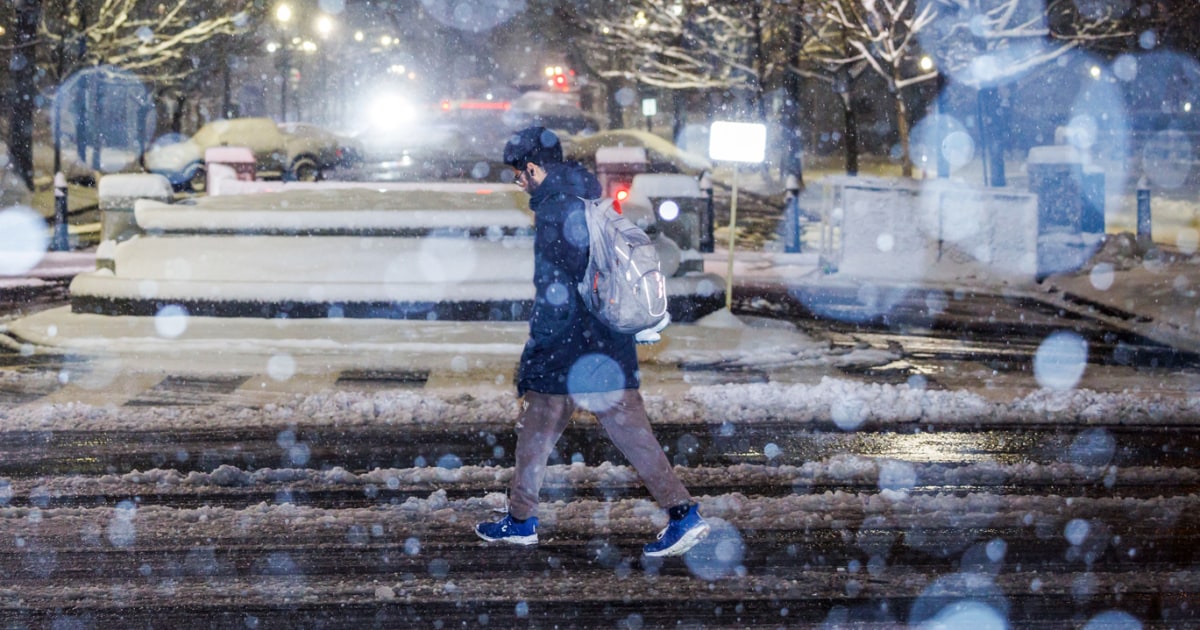Extreme Winter Weather: Over 100 Million Americans Face Alerts
A powerful winter storm is making its presence felt across the United States, leaving over 100 million Americans under various weather alerts. From the snowy peaks of the Rockies to the rain-soaked coasts of the Northeast, this extreme winter weather has prompted officials to urge residents to prepare for potential disruptions and hazardous conditions. With heavy snowfall, torrential rain, and strong winds expected, understanding the implications of this storm is crucial for safety and preparedness.
Understanding the Current Weather Situation
This winter storm is characterized by a complex interplay of weather patterns, leading to significant snowfall in some regions while others experience heavy rainfall. Meteorologists have indicated that this storm system is fueled by a combination of cold Arctic air colliding with moist, warm air from the Gulf of Mexico. This clash is a recipe for severe weather, resulting in hazardous conditions across a vast portion of the country.
As of the latest reports, the storm is impacting states from the West Coast to the East Coast, with the heaviest snowfall recorded in the mountainous regions of the Rockies and the Sierra Nevada. Meanwhile, coastal areas are bracing for heavy rain, potentially leading to flooding and coastal erosion.
Impact on Daily Life and Travel
With over 100 million individuals facing alerts, the impact of extreme winter weather is profound. Daily life is disrupted, and the travel industry is particularly hard-hit. Airlines have already begun to cancel flights, and major highways are experiencing delays and closures due to poor visibility and treacherous road conditions.
- Air Travel: Airports in affected regions are bracing for significant disruptions. Travelers are advised to check flight statuses frequently and consider rescheduling if possible.
- Road Travel: State and local authorities are urging motorists to avoid non-essential travel. Snow-covered and icy roads can lead to accidents and stranded vehicles.
- Public Transport: Bus and train services may also face delays or cancellations, particularly in regions experiencing heavy snowfall or flooding.
Safety Preparations and Recommendations
In light of the extreme winter weather, residents in affected areas must take proactive measures to ensure their safety. Here are some key recommendations:
- Stay Informed: Keep track of weather updates through reliable sources such as the National Weather Service (NWS) or local news stations. Weather apps can also provide real-time alerts.
- Prepare Your Home: Ensure that you have enough food, water, and essential supplies to last for several days. Stock up on medications and other necessities, as travel may become difficult.
- Emergency Kits: Assemble an emergency kit that includes flashlights, batteries, blankets, a first aid kit, and a battery-operated radio.
- Vehicle Preparedness: If you must travel, ensure your vehicle is equipped with an emergency kit, including a shovel, ice scraper, jumper cables, and non-perishable snacks.
Environmental and Economic Considerations
The extreme winter weather not only disrupts daily life but also has broader environmental and economic implications. For instance, heavy snowfall can lead to increased snowpack, which is crucial for water supply in many regions, particularly in the West. However, it can also contribute to flooding during the spring melt.
Economically, the effects of such weather systems can be significant. Businesses may face closures, and supply chains can be disrupted, especially for industries reliant on transportation. The agricultural sector may also be impacted, depending on the timing and severity of the storm. For instance, fruit trees can suffer damage from heavy snow or ice, while livestock may need additional care during extreme cold.
Historical Context of Extreme Winter Weather
Extreme winter weather isn’t new to the United States. History has shown us that severe winter storms can cause widespread disruption and devastation. The Great Blizzard of 1888, for example, paralyzed the East Coast for days, leading to significant loss of life and economic downturns. In more recent years, storms like Winter Storm Jonas in 2016 and Winter Storm Stella in 2017 reminded us of the power of nature and the importance of preparedness.
Analyzing these historical events helps us understand patterns and improve our response to future storms. Advances in meteorological technology have allowed for better predictions and more timely warnings, but the responsibility still lies with individuals to prepare adequately.
Community Response and Resilience
Communities across the nation are coming together to respond to this extreme winter weather. Local governments are mobilizing resources, including snow removal equipment and emergency shelters. Community organizations are stepping up to assist vulnerable populations, ensuring that the elderly and those without transportation have access to necessary supplies and warmth.
Social media has become a vital tool for sharing information and resources during such events. Community groups use platforms to coordinate efforts, share tips, and provide updates on local conditions, showcasing the resilience and solidarity of citizens during challenging times.
Conclusion: Embracing Preparedness and Adaptability
The current extreme winter weather affecting over 100 million Americans serves as a stark reminder of the power of nature and the importance of preparedness. By understanding the potential impacts and taking proactive measures, individuals and communities can navigate these challenges more effectively. As we face this winter storm, let us embrace the spirit of resilience, supporting one another and staying informed as we weather the storm together.
In summary, while extreme winter weather poses significant challenges, it also presents an opportunity to reinforce our commitment to preparedness and community resilience. By learning from past storms and acting decisively, we can mitigate the impacts of severe weather and emerge stronger on the other side.
See more Your Daily Weather



